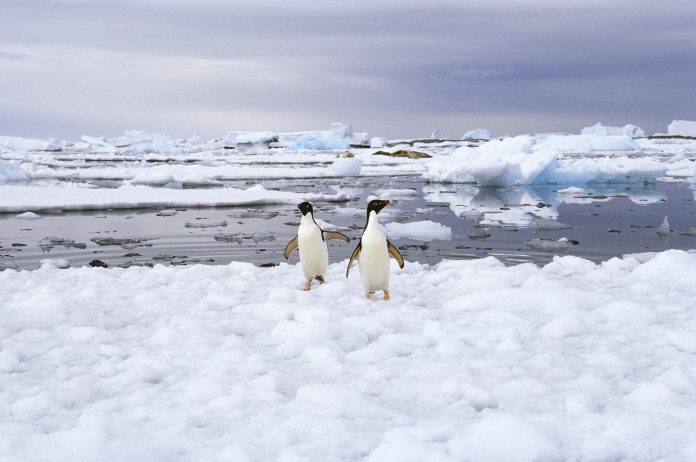New research highlights how a network of marine protected areas could help defend essential breeding areas for Antarctic penguins
New research led by BirdLife International, the University of East Anglia (UEA) and British Antarctic Survey highlights how a network of Marine Protected Areas (MPAs) could help preserve some of the most important areas at sea for breeding Antarctic penguins.
The findings show that if all the MPAs around Antarctica were adopted, the conservation of high-quality areas for penguins would increase by between 49% and 100% depending on the species.
The Southern Ocean is home to four species of penguins – the Adélie, Chinstrap, Gentoo and Emperor – however, many of their habitats remain unprotected, putting them at risk of human-related threats such as pollution, overfishing and climate change.
The international research team used a new approach based on colony location, population estimates, and tracking data, to identify 63 key sites known as Important Bird and Biodiversity Areas (IBAs). They are used by at least 1% of a species’ global population and represent important foraging grounds.
They found that Adélie and Emperor penguins currently have 27-31% of the important areas within adopted MPAs, but no Gentoo’s IBAs and only 1% of Chinstrap’s are within them.
Fishing activity
The team also examined krill fishery activities over the last 50 years and found that a disproportionate amount of krill is being harvested within the IBAs.
Lead author Dr Jonathan Handley, lead author of Birdlife International, said: “Our findings provide critical evidence about the location and relevance of some of the most important areas globally for chick-rearing adult penguins breeding in Antarctica and nearby islands.
“Over the past five decades, krill fisheries have concentrated into a small number of areas in Antarctic waters, some of which we identified as important penguin foraging grounds. This poses a likely threat for several penguin colonies, especially when they are rearing chicks.”
Co-author Dr Aldina Franco, of UEA’s School of Environmental Sciences, said the new study supports the adoption of the proposed MPA network: “Recent studies have shown that krill fisheries could be directly competing with penguins for critical food supplies. The proposed Marine Protected Area network, which has recognised go/no go areas for krill fisheries, can help guarantee that enough krill is available for penguins.”
Commission for the Conservation of Antarctic Marine Living Resources
To control the increasing commercial interest in Antarctic fisheries, an international convention was established in 1982, governed by the Commission for the Conservation of Antarctic Marine Living Resources (CCAMLR). The CCAMLR envisioned the creation of a network of MPAs around Antarctica since 2002, but since 2016 only two have been implemented.
Marie-Morgane Rouyer, who jointly led the research while a Masters student at UEA, added: “Marine resources need to be managed in a sustainable way if we are to guarantee the existence of these emblematic penguin species in the future.”
The research was funded by the Pew Charitable Trusts and published in the journal Frontiers in Marine Science
Source:
https://www.eurekalert.org/pub_releases/2021-01/uoea-ssh011921.php











